Why does my Sharp LCD TV sometimes make a cracking sound?
- Nnathaniel91Sep 14, 2025
This is not a malfunction.
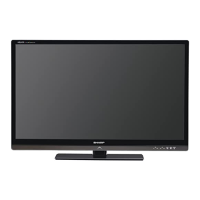
Why does my Sharp LCD TV sometimes make a cracking sound?
This is not a malfunction.
| Screen Size | 40 inches |
|---|---|
| Display Type | LCD |
| Backlight Type | LED |
| Refresh Rate | 120 Hz |
| HDMI Ports | 4 |
| USB Ports | 1 |
| Audio Output | 10W x 2 |
| Smart TV | Yes |
| Ethernet Port | Yes |
| Wi-Fi | Yes |
| Resolution | 1920 x 1080 |
| 3D | Yes |
| Built-in Tuner | ATSC/QAM |
| Viewing Angle | 176 degrees |
| Connectivity | HDMI, USB, Ethernet, Component, Composite |
Critical warnings about electrical shock, moisture, and equipment handling.
Details regarding FCC regulations, declarations, and radiation exposure statements.
Core safety instructions including reading manuals, handling electricity, and cleaning.
Safety measures related to environment, installation, heat, and power lines.
Precautions for transporting the TV, caring for its parts, and child safety.
Instructions for securely attaching the TV stand to the unit.
Steps for initial setup and connecting the TV for basic operation.
Guide on operating the TV using the provided remote control unit.
Guidance on connecting antenna cables for optimal TV reception.
Instructions for inserting batteries into the remote control unit.
Identification of all external connectors and ports on the TV.
Detailed layout and function of each button on the remote control.
Information on how to get the best HD picture from various sources.
Overview of different input terminals and their compatibility for quality.
Steps to select and display content from connected external devices.
Guide for connecting devices using HDMI and DVI-HDMI cables.
Connecting devices via Component and Composite video/audio cables.
Connecting audio amplifiers using optical or audio cables.
Steps for connecting a computer to the TV via HDMI, DVI, or RGB.
Procedures for powering the TV and performing the first-time setup.
Configuring language, TV location, and TV reception type.
Performing automatic channel scans and managing channel settings.
Methods for changing channels and adjusting audio volume directly.
Explanations of Mute, Sleep Timer, Flashback, and Freeze functions.
Using buttons for AV Mode, Input, Apps, and Power Saving settings.
How to enable and manage closed captioning services for TV programs.
Adjusting the screen aspect ratio and size for different content.
How to access and navigate the TV's on-screen menu system.
Adjusting various picture parameters like brightness, contrast, and color.
Customizing audio preferences such as volume, surround, and voice clarity.
Settings for managing power consumption and automatic shut-off features.
Configuration of system-level features like view options and input settings.
Options for reconfiguring initial TV settings like language and channel setup.
Setting up content ratings and parental control features for child safety.
Viewing TV information and updating system software.
How to connect USB devices and DLNA servers for media playback.
Navigating and playing photos, music, and videos from USB or DLNA.
Managing slide show settings, BGM, and removing USB devices.
Configuring DivX registration and checking media file format compatibility.
Programming the remote to control other connected AV devices.
Using the remote to control external devices like STB, DVD, VCR.
Interactively operating HDMI-CEC compatible devices using the TV remote.
Configuring AQUOS LINK features like auto power and recorder selection.
Managing media types for recorders and selecting HDMI devices.
Connecting a PC and optimizing the display image and audio input.
Using IP or RS-232C for PC control of TV functions and communication settings.
Steps for establishing an Ethernet or wireless internet connection and network settings.
Using the toolbar, tabs, bookmarks, and customizing browser behavior.
Accessing online apps, managing software, and legal disclaimers for internet services.
Instructions for safely detaching the TV stand from the unit.
Guidelines for wall-mounting the TV and listing available optional accessories.
Solutions for common problems like no power, picture issues, or no sound.
Procedures for resetting secret numbers and listing product trademarks.
Detailed technical specifications for the TV models, including dimensions and inputs.
Technical details regarding the TV's wireless LAN capabilities and certifications.
Details about the software components and their licensing agreements.
Terms and conditions of the limited warranty for the product, including exclusions.
Procedures for getting service, contact information, and warranty coverage details.
Physical dimensions of the TV models and compatible wall mount brackets.
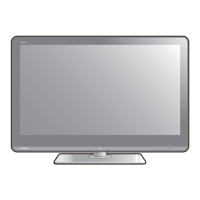
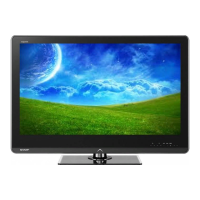





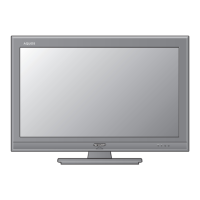
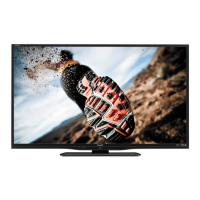

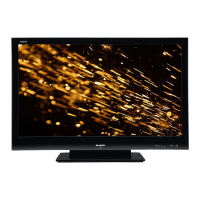
